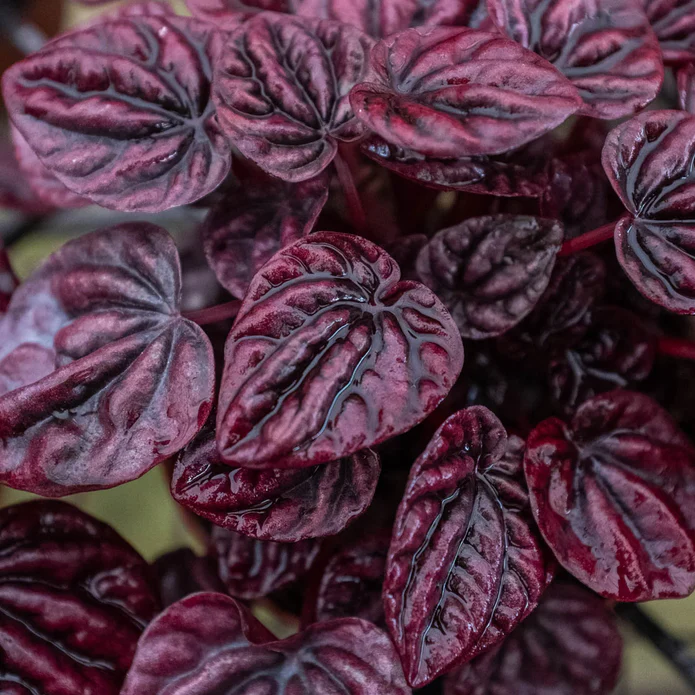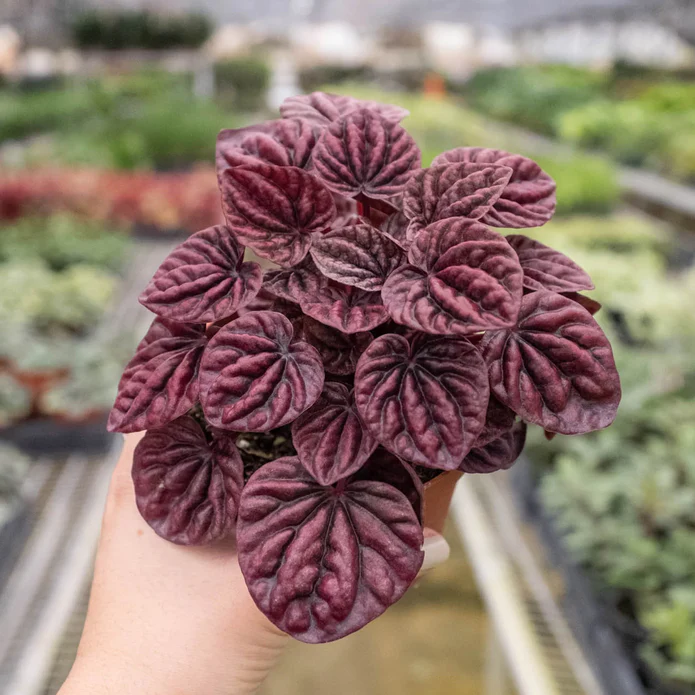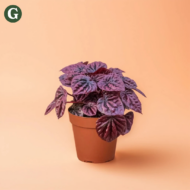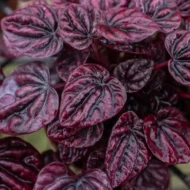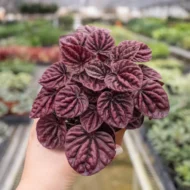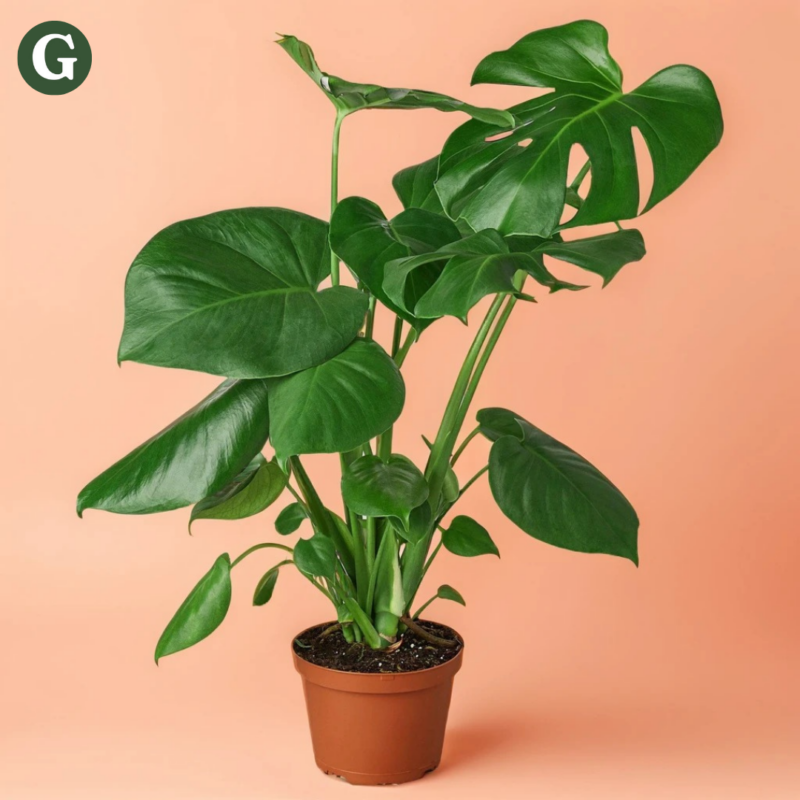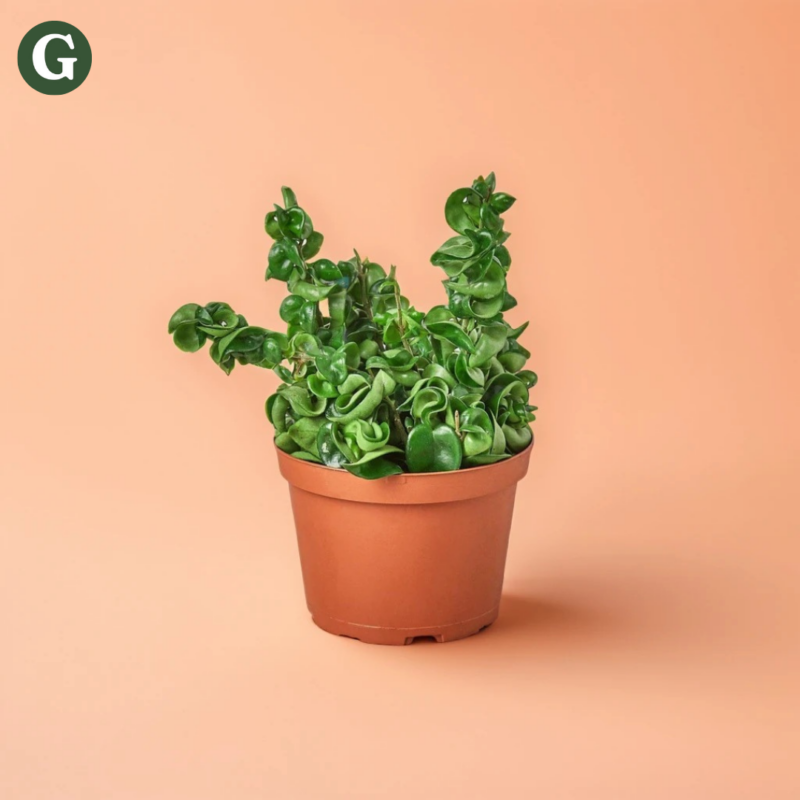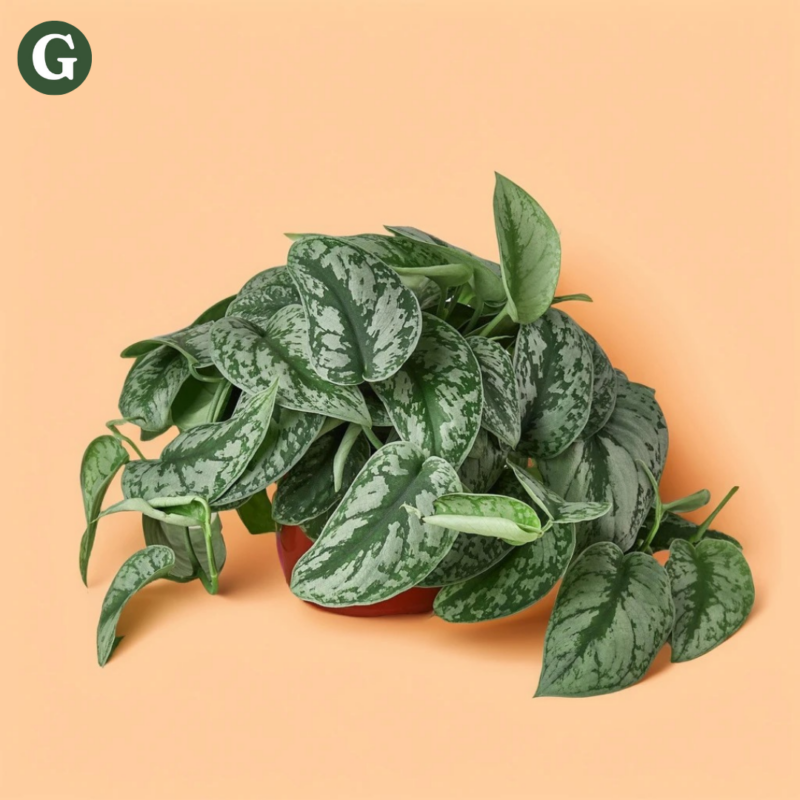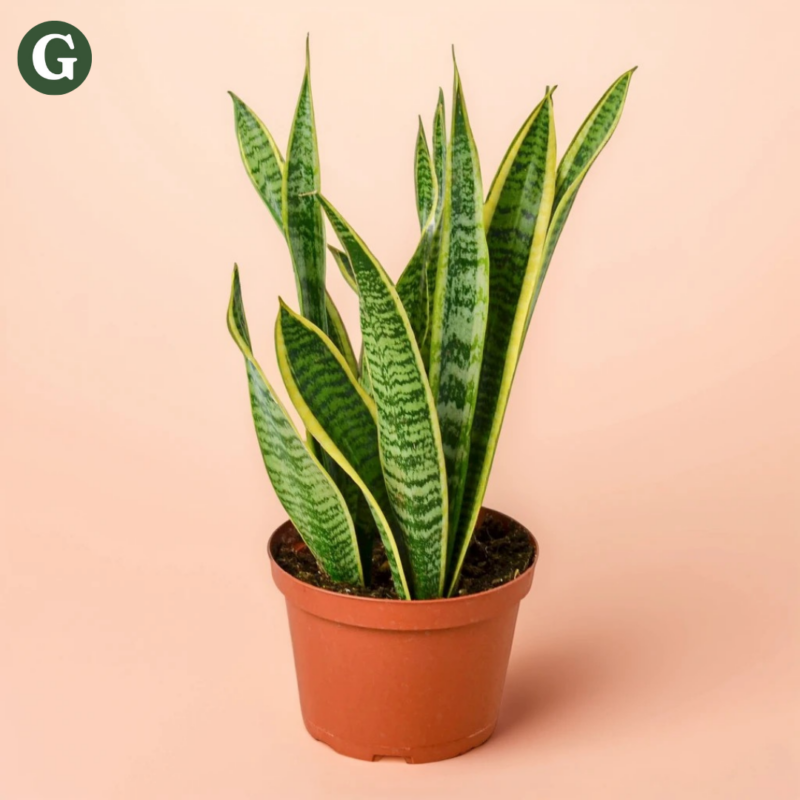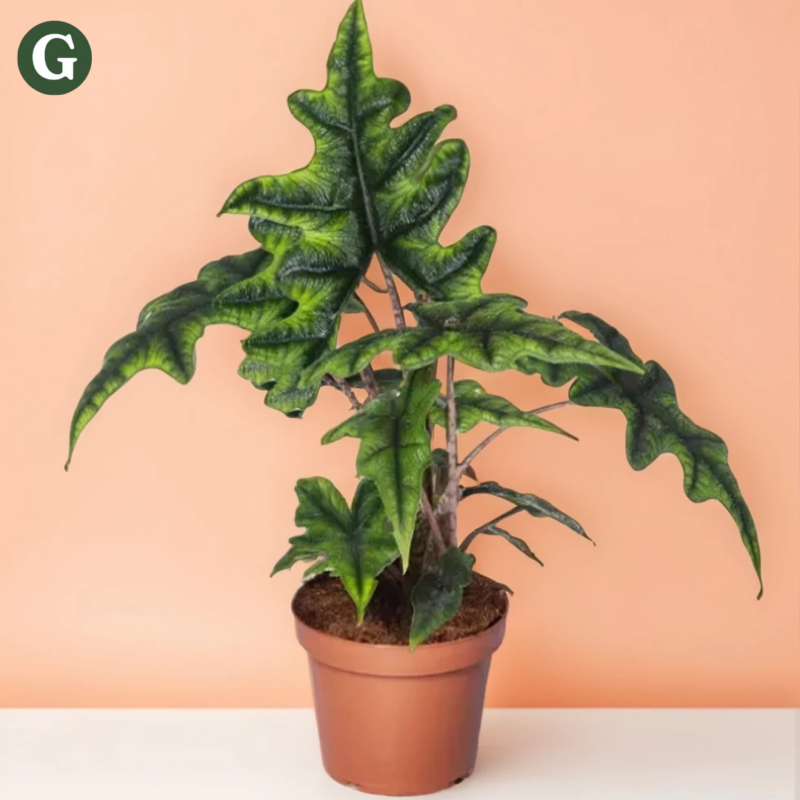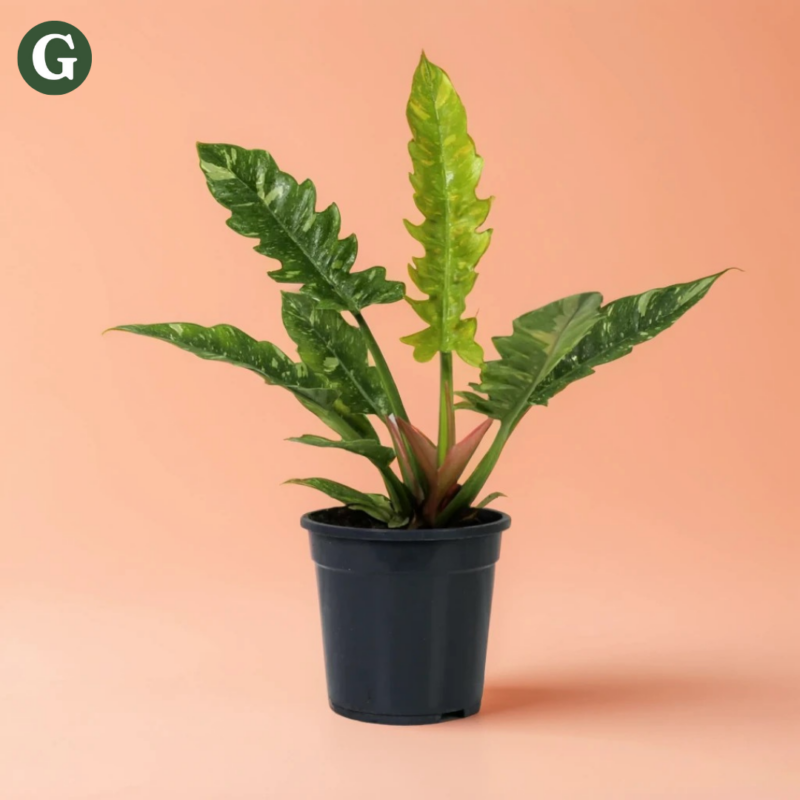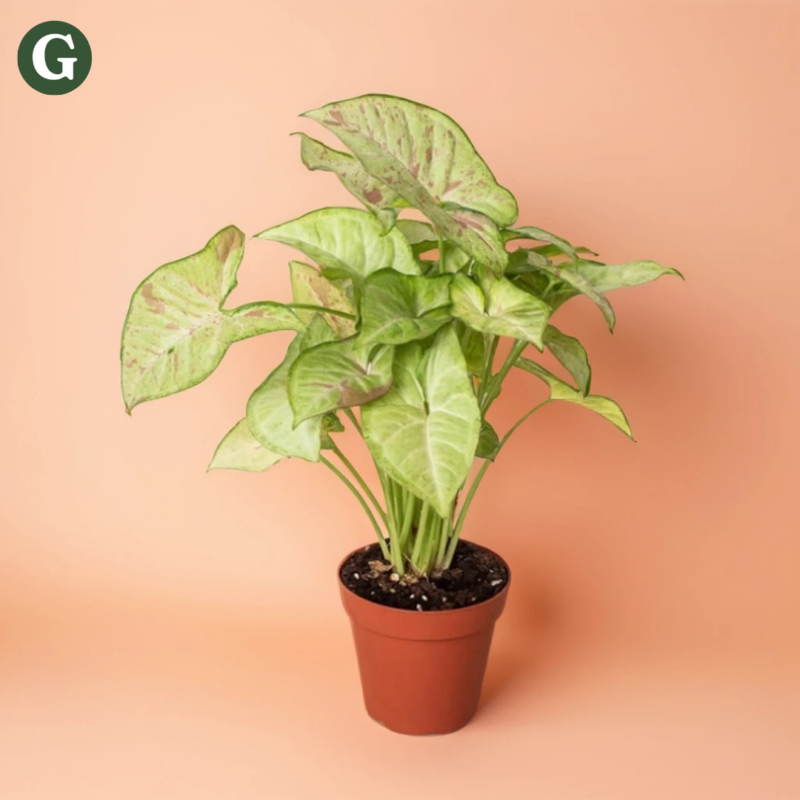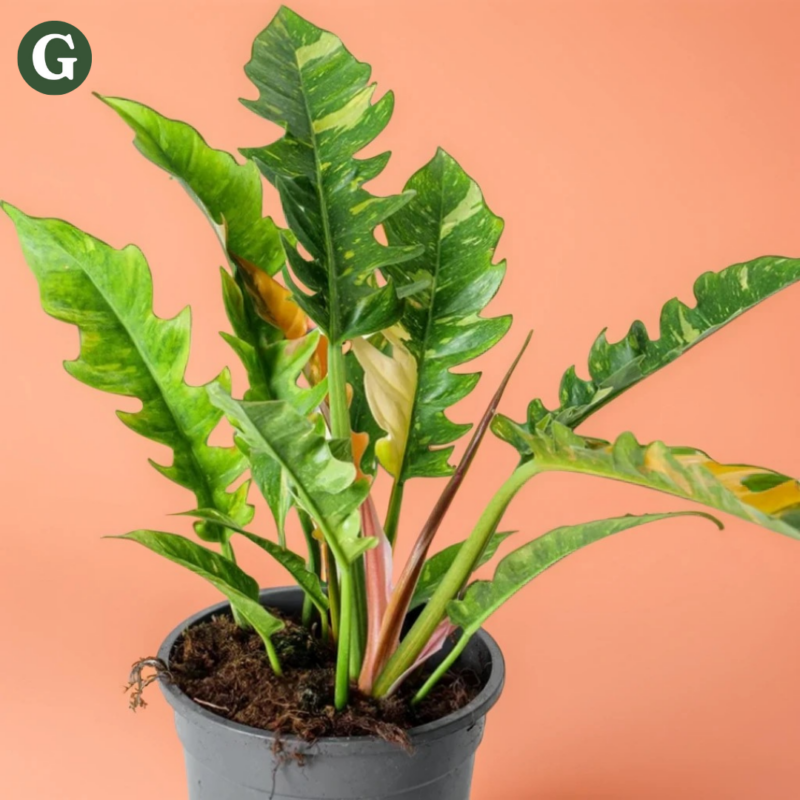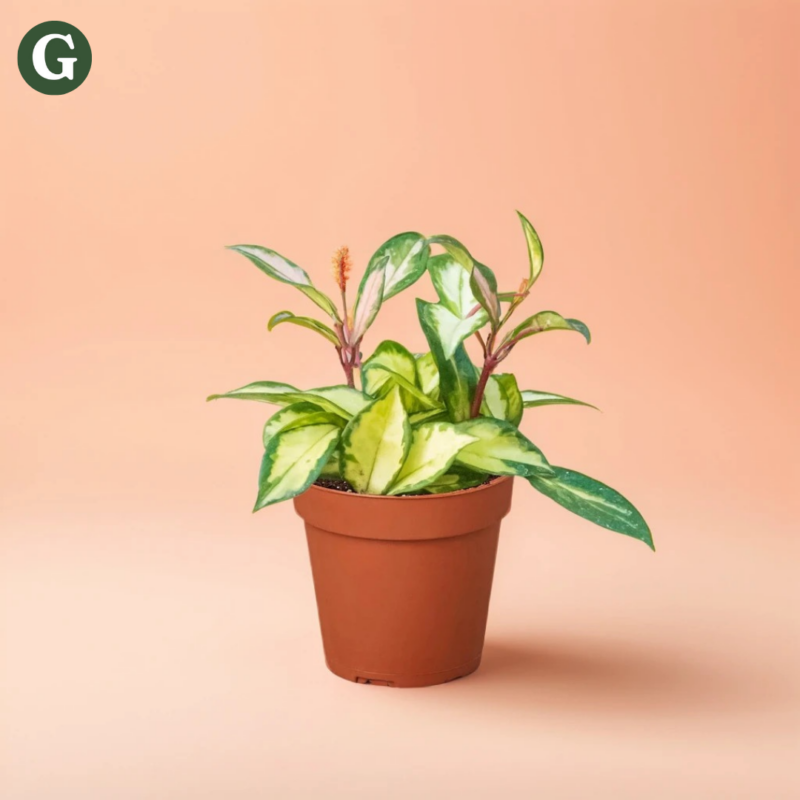Peperomia Ripple Red
Botanical Name: Peperomia caperata ‘Red Ripple’
Common Name(s): Red Ripple Peperomia, Ruby Ripple Peperomia
Peperomia Red Ripple is an eye-catching, compact houseplant known for its deeply textured, heart-shaped leaves that feature a rich, burgundy-red color. Native to the rainforests of Brazil, this plant has a mounding growth habit and typically reaches about 6-8 inches in height, making it a perfect choice for desks, tabletops, or shelves. The striking red foliage provides a dramatic contrast when grouped with other green plants, adding depth and color to any indoor space.
Red Ripple Peperomia thrives in bright, indirect light, which helps to maintain its vibrant red color, though it can adapt to lower light conditions with slower growth. It prefers well-draining soil and is sensitive to overwatering, so it’s best to let the top inch of soil dry out before watering. This plant tolerates average indoor humidity levels but may benefit from slightly higher humidity, especially during dry winter months.
Air Purifying Qualities: Like other Peperomias, Red Ripple contributes to improved indoor air quality by absorbing carbon dioxide and releasing oxygen, helping to create a fresher indoor atmosphere.
Note: Red Ripple Peperomia is non-toxic to pets, making it a safe and pet-friendly choice for homes with animals. However, as with all plants, it’s wise to monitor pets to prevent any accidental nibbling.
Care Insights & Expert Tips
- Fertilize sparingly: Feed your Peperomia Ripple Red with a diluted, balanced liquid fertilizer once or twice a year during the spring and summer season. Too much fertilizer can burn the roots.
- Repot carefully: Repot your Peperomia Ripple Red only when it becomes root-bound. Use a well-draining potting mix.
- Avoid overwatering: Overwatering is the most common cause of death for peperomias. Allow the soil to dry out completely before watering again.
- Protect from cold drafts & pests: Peperomias are sensitive to cold drafts. Place them away from drafty windows and doors. Additionally, keep an eye out for common houseplant pests like mealybugs and spider mites. Treat infestations promptly with insecticidal soap or neem oil.

Visit our plant care library
Find essential tips to keep your plants thriving, vibrant, and healthy.

